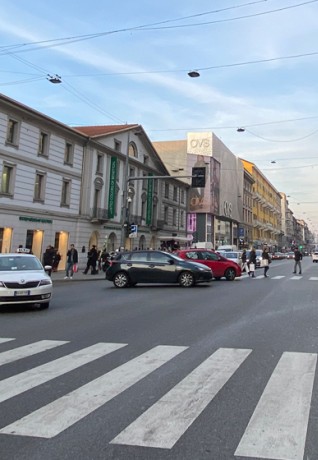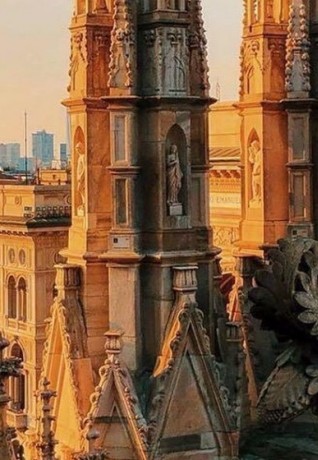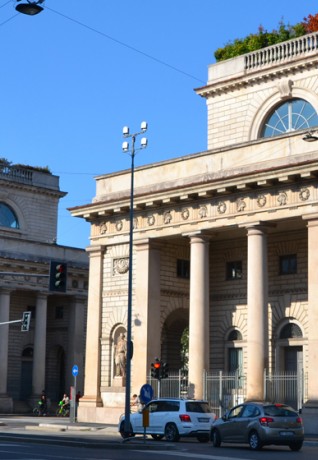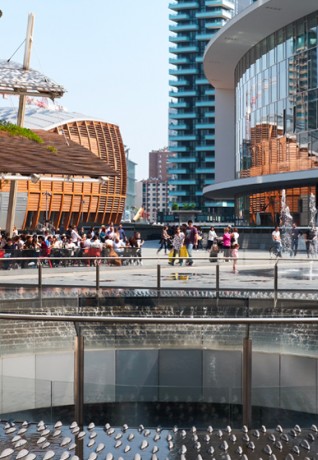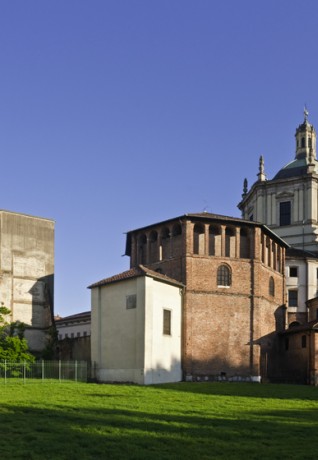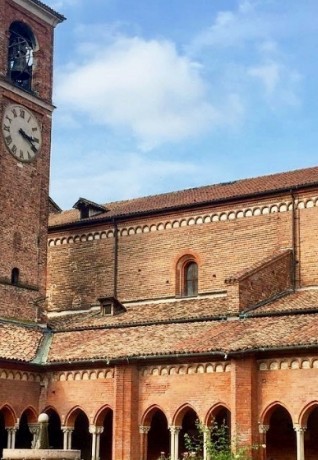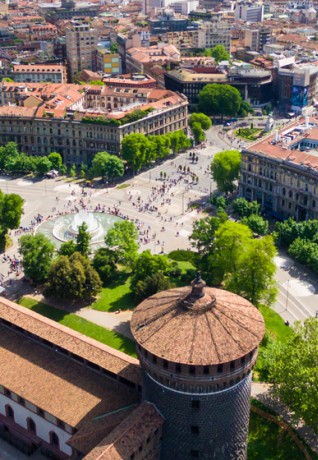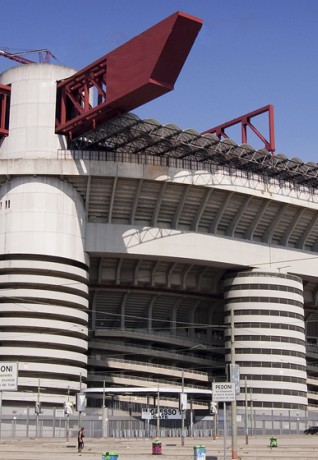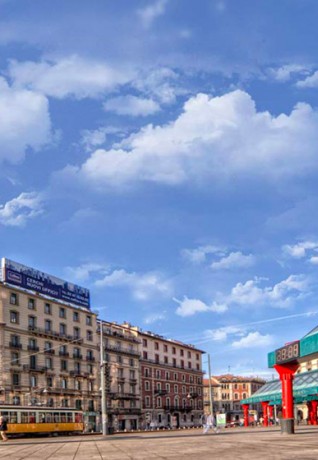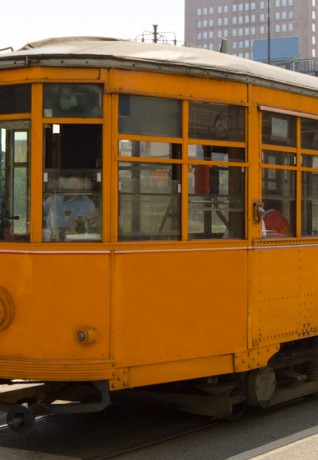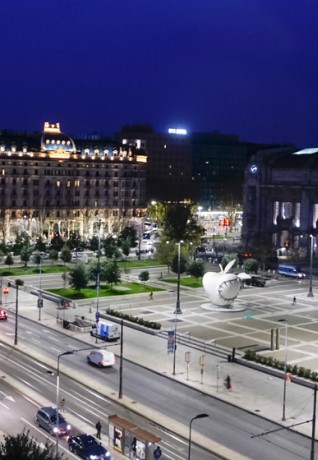Accessible itinerary: Parco Sempione and Chinatown
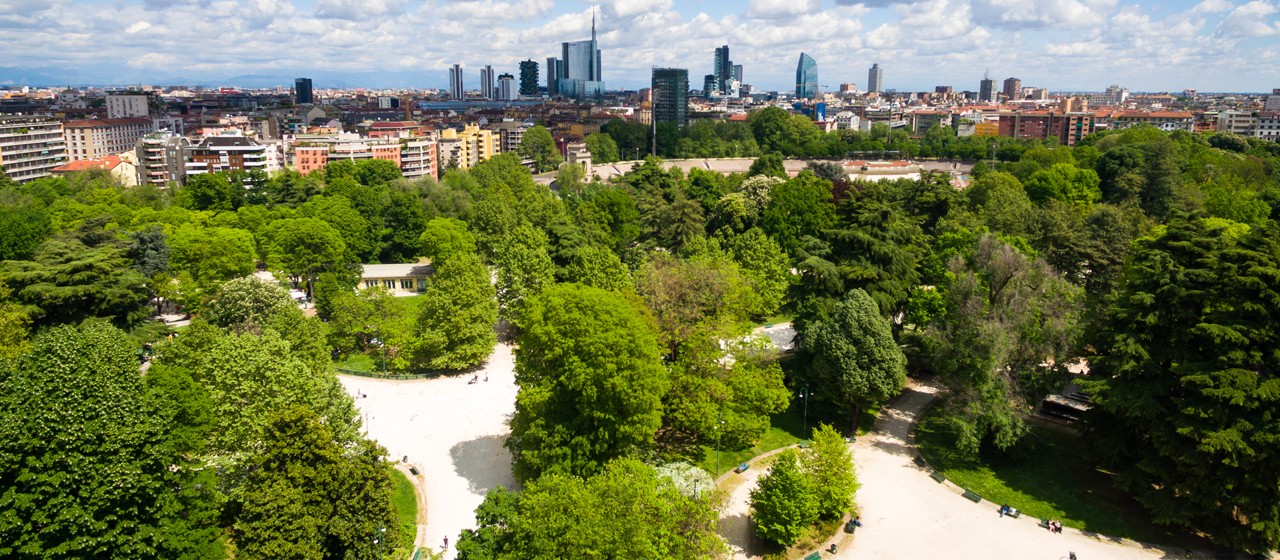
The itinerary starts from Piazzale Cadorna, that hosts the historic building of the Ferrovie Nord Milano Railway Station.
How to get there
Piazzale Cadorna can be reached by underground lines M1 and M2 (Cadorna stop) and by bus: 50, 58 and 94.
For more information for passengers with disabilities, please visit the ATM web page.
It can also be reached by Trenord railway lines. More information for disabled passengers can be found by visiting the Trenord website.
Where to park
Reaching the area by car, it is possible to park in via Pietro Paleocapa and in via Gerolamo Bartolomeo Gadio within the parking spaces marked by blue stripes. In front of the train station, in the taxi area, are two parking spaces reserved for disabled parking permit holders.
The itinerary starts from Piazzale Cadorna, where the historic building of the Ferrovie Nord Milano Station may be seen. In the year 2000, the square underwent a significant urban restyling based on a project by architect Gae Aulenti, who decorated it with a shelter and set up a sculpture by the artists Claes Oldenburg and Coosje van Bruggen, reproducing a large needle, thread and knot, symbols of Milano's industriousness.
The first stop on this itinerary is Triennale. Keeping the railway station behind you, turn left to reach via Pietro Paleocapa. Here turn left again, taking the right sidewalk of the street, and walk for about 200 metres.
Cross via Jacini and further on via Gadio (pedestrian crossings with an audible warning device for the visually impaired). Continue along Viale Emilio Alemagna for about 300 meters until you reach Palazzo dell'Arte, home to Milano's Triennale.
This is an international cultural institution where art, design, architecture, fashion and cinema exhibitions, conferences and events are organized. Once the visit to the exhibition venue is over, a must-see is the installation known as The Mysterious Baths, created in 1973 by Giorgio De Chirico and located in the gardens at the back of Palazzo dell'Arte.
Leaving Triennale and keeping the main entrance behind you, walk along Viale Alemagna on your right and after 50 meters turn right onto Viale Luigi Camoens (with an average gradient between 4.6% and 7.2% in the last stretch). After about thirty meters, you will find on your left the entrance to the Branca Tower, designed by Cesare Chiodi and Gio Ponti and inaugurated in 1933. It is possible to get on top of the tower, from where the whole city can be admired: on clear days, you can see the foothills of the Alps.
Once you exit the tower lift and get back to the entrance on viale Camoens, turn left and after a few metres reach one of the entrances to Parco Sempione; all paths have a compact surface and are easily enjoyable even on a wheelchair.
Turn right to reach Castello Sforzesco; do not miss a visit to the former Spanish hospital, which houses the Pietà Rondanini, the last unfinished masterpiece by Michelangelo Buonarroti (for more information on Castello Sforzesco and Parco Sempione, look up the itinerary The heart of the city).
After the visit to Castello Sforzesco, return to Piazza del Cannone. In front of you, in the distance, rises the Arco della Pace, started in 1807 at the behest of Napoleon Bonaparte and completed by the Austrians in 1838.
In Piazza del Cannone, turn right and proceed for about 350 metres, leaving the park and walking along Via Gadio, until you reach Acquario Civico (the Municipal Aquarium). It is housed in an elegant Art Nouveau building, adorned with friezes and majolica. The exhibits offer an interesting insight into the Italian watery environments.
Once the visit to the Aquarium is over, go back to Via Gadio, and turn left to enter Parco Sempione. Head to Gianni Brera Municipal Arena and, once you arrive, walk along Viale Repubblica Cisalpina until you reach the park exit in Viale Elvezia. Turn right and walk for about 50 metres until you reach the crossroad with Via Canonica (crossing with a threshold, equipped with an audible warning device for the visually impaired) and cross Viale Elvezia.
Now you can reach via Paolo Sarpi by walking along the streets of the neighbourhood (about 600 metres) or using public transport. If you wish to go by bus, cross via Canonica (crossing with a threshold, equipped with an audible warning device for the visually impaired) and reach the bus stop of line n. 43 (about 30 metres away, Piazza Firenze direction) or line n. 57 (Quarto Oggiaro direction).
After four stops, get off a few metres before the intersection with via Paolo Sarpi: the road is about 800 metres long (paved, with a central section in cobblestones) and it is known as Milano’s Chinatown. It is a cycling and pedestrian street decorated with flowerbeds and trees.
Starting in the 1920’s, many immigrants from China began to settle in this area of the town. Already during Fascism, this area was called "the Chinese Headquarters".
However, do not expect the typical papier-mache doors or dragons, except on the days in February when the Chinese New Year is celebrated: you can then enjoy the float parade and shop at the stalls.
The Chinese presence is visible in the many ethnic restaurants and shops and in the carts and bicycles loaded with goods that run through the neighbourhood’s streets. Follow the road and look around the various shops and contemporary art workshops. You can end your day with a dinner of soy noodles, tofu and Cantonese duck or with take away dumplings, cooked on the spot.
Via Paolo Sarpi is served by n. 2, 4, 12, 14 trams and n. 43, 57, 94 buses. They are all accessible except for trams 2 and 12.
For more information for passengers with disabilities, please visit the ATM web page.
At the end of this itinerary, for those who prefer to use public transport, two options are available.
The first one is to reach the end of via Paolo Sarpi, turn right into viale Montello and after about 200 metres find the line n. 4 tram stop (Piazza Castello direction). You can get off at the Lanza, where you will find Piccolo Teatro and the M2 underground, or at the terminus in Piazza Castello (all these tram stops are accessible).
The second option: at the intersection of via Sarpi with via Bramante, take the n.14 tram towards Lorenteggio (accessible tram stop) which will take you to piazza Duomo (the Duomo tram stop is not accessible; so it is advisable to get off at the Cordusio or via Torino stops).
For those who prefer to get around by car, it is possible to park on blue stripes in the streets surrounding Via Paolo Sarpi.

 Log in
Log in


